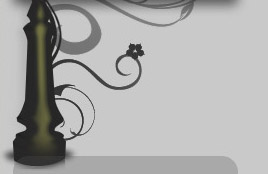 Artist Biography:
Artist Biography: David Mann is the Norman Rockwell of the biker world.
He has lived the lifestyle from Kansas to Florida to
Los Angeles, and through his art he has rendered the fun, fascination,
trials and romance of bikerdom on the centerspreads of Easyriders magazine -
the most widely circulated motorcycle magazine in existence - for 16
years. His touch, talent, and appeal have set trends and created a
following around the world.
The son of artist Paul Mann, a member
of the Society of Scribes and Illuminators of London, David Mann was born in
Kansas City, Missouri in 1940. David first began pencil-sketching cars
while in high school, working under the rhythmic influences of rock 'n'
roll, the Beach Boys, and images of the Pacific: white sandy beaches,
bikini-clad ladies, palm trees, and flashy custom cars and hot rods.
His sketches garnered him his first job, pinstriping cars for Doug Thompson
and Ray Hetrick's custom car shop in Kansas City. The lure of the west
coast proved too strong, though, and after graduation, David and best friend
Al Burnett left Kansas City in a candy apple red and pearl white customized
chevy coupe and drove to Santa Monica, California, to the tunes of Jerry Lee
Lewis.
While enjoying this rock 'n' roll
wonderland, he came across Bay Area Muffler, an area custom car house, and
he discovered chopped motorcycles. Choppers, as they were termed then,
had a distinctive appeal. The projected freedom with every chromed
curve, mobility and power by their thundering sound, romance along each
metalflaked frame rail, and a certain air of violence in their striking
ability to separate themselves from the clinches of society with impunitive
bursts of speed.
David was immediately hooked on the
powerful steel steeds of glistening chrome. These crazy men hand-build
these motorcycles under no restrictions and they risked their lives daily,
riding them through an antagonistic city at steel-twisting speeds.
Shortly after his stay in Los Angeles,
David returned to Kansas City and purchased his first motorcycle - a 1948
Harley-Davidson - for $350.00. Then, with opaque watercolors, he
created his first painting, "Hollywood Run." Riding on his
first customized Harley and with his first painting under his arm, he
entered the 1963 Kansas City Custom Car show.
What that first painting may have
lacked in detail, it made up for in spirit. It was rampant with wild
freedom and outrageous machines, like a herd of unleashed hallucinogenic
horses screaming out of the Hollywood hills. It captured the very
essence of chopper riders of the time: soldiers without a war,
gladiators without an opponent, men with blood in their eyes, looking for a
place to taste it. That painting and that car show changed Mann's
life, launching an artistic career which continues to expand today.
David's was the only custom bike entry
in the show. For his innovation, the judges created a class and a
trophy. Naturally, his scooter was the only object to be noticed by
Tiny, an enormous outlaw from Sioux City, Iowa. The president of a
small band of outlaw motorcyclists, Tiny became Mann's motorcycle mentor.
Tiny took David under his wing, and
David became the eighth member of the band. Tiny also took an
instamatic snapshot of Dave's painting and sent it to the eccentric Ed
"Big Daddy" Roth, California creator of custom cars and
motorcycles and first publisher of a motorcycle cult magazine,
Chopper. Ed Roth bought David Mann's first painting.
With no training, no formal education,
and little experience, Mann had created a work of art in tempera which was
published and printed for poster sales. "The Tecate Run" was
the second painting David completed. Again, it was published by Roth
and printed for poster sales.
At Ed Roth's insistence, Dave made his
second trip to California and visited an outlaw ranch in San Bernardino,
where he met legends of the biker community. Engulfed in the dark,
mysterious biker lifestyle throughout the '60's, Dave painted 14 works for
Roth, capturing his own experiences, the camaraderie of bikers, their
warring ways, their parties...and the dark, jagged freedom. Ten were
published and lithographed for posters.
In 1965, Dave went to work in the mail
room at Scheffer Studios in Kansas City, where he met an architectural
renderer, Dave Poole, who told him about the crazy, green, metalflaked
motorcycle he'd hear of. It was David's. The next day, he rode
the wild Harley to work, and another friendship was born.
Recognizing David's inherent talent,
Dave Poole taught him architectural rendering and the use of an airbrush,
which David has incorporated into his art for the last 17 years. By
1967, David was developing into a full-fledged architectural renderer,
learning the intricacies of detail, reflection, exacting dimension, and
mechanical perspective. He studied at Kansas City Art Institute.
In the late '60's, Scheffer Studios moved to Clearwater, Florida, and David
began allowing his abilities to reach into diverse subjects.
He studied Dali's surrealism, trompe
l'oeil, and fantasy, and he mastered the use of gouache and acrylics.
His efforts didn't go unrewarded. He began collecting best-of-show
awards in Seminole Springs and Dunedin. His name was mentioned in the
company of famous masters such as Rockwell and Leroy Neiman.
David was rapidly refining his ability
to deal with detail and realism when he discovered a new motorcycle magazine
with a new twist - Easyriders. The magazine concentrated on the
lifestyle of the riders and their women, not the technical aspects of
building choppers. In the back of the first issue was a small,
insignificant classified ad for a motorcycle artist. Dave inquired in
late 1971, and the publishers responded. It was the beginning of a
creative relationship which has spanned over a decade and a half of
tumultuous times, changing styles, and a lifestyle growing up.
Through the medium of Easyriders, Dave
had endeavored to portray the fun of being a biker, the battles, the
hardships, and the ironies. As you will see, he has succeeded
admirably.





